Lower Vasse River Management - Improving Water Quality
The Lower Vasse River is a stretch of the Vasse River approximately 5.5km in length, runs from the Vasse Diversion Drain to the estuary, and flows through the centre of Busselton. This section is greatly modified, with a significant portion of catchment flows diverted to Geographe Bay (to protect against residential flooding) and was historically impounded by a weir structure downstream at the Old Butter Factory. The river is highly eutrophic (impacted by excess nutrient loads), with cyanobacterial blooms occurring each year during the warmer months. The river receives excess nutrients from the urban and rural catchment inflows, from groundwater, and potentially from river sediment. Isolation of flow, poor water quality, and location have led to the need for specific management of this waterbody.
Updates
November 2025
A preferred contractor has been identified through a tender process for Stage 3 of the Lower Vasse River Sediment Removal Program, and the City is working with the contractor to understand how current water levels in the river may impact program scheduling. More information will be provided when available.
September 2025
The City is committed to keeping the community informed on updates and projects affecting the Lower Vasse River and Toby Inlet through the uploading of information to the City’s website. As part of this work the City has developed a ‘Working Together’ landing page that outlines the groups, organisations and agency’s that are involved in managing our waterways. The page breaks down the roles and responsibilities of each of these bodies and provides a link to their own websites. The City hopes this page will assist the community in understanding the different roles each group plays and how they all interconnect to ‘work together’ in waterway management.
Working Together on Waterway Management Page
August 2025
On Thursday 14 August, the City of Busselton in partnership with Geocatch, Murdoch University and the Department of Water and Environmental Regulation’s (DWER) Healthy Rivers team held the inaugural ‘Catchment to Coast’ event.
The waterways community information evening provided four presentations from the above parties, sharing knowledge and the work they are doing. The evening covered a wide range of topics, including nutrient management, sediment removal and feral fish control programs. The community were invited to ask questions of our presenters before concluding for refreshments and more discussion.
Thank you to all who attended and contributed to the discussion, it was great to see so many people across community and industry attend.

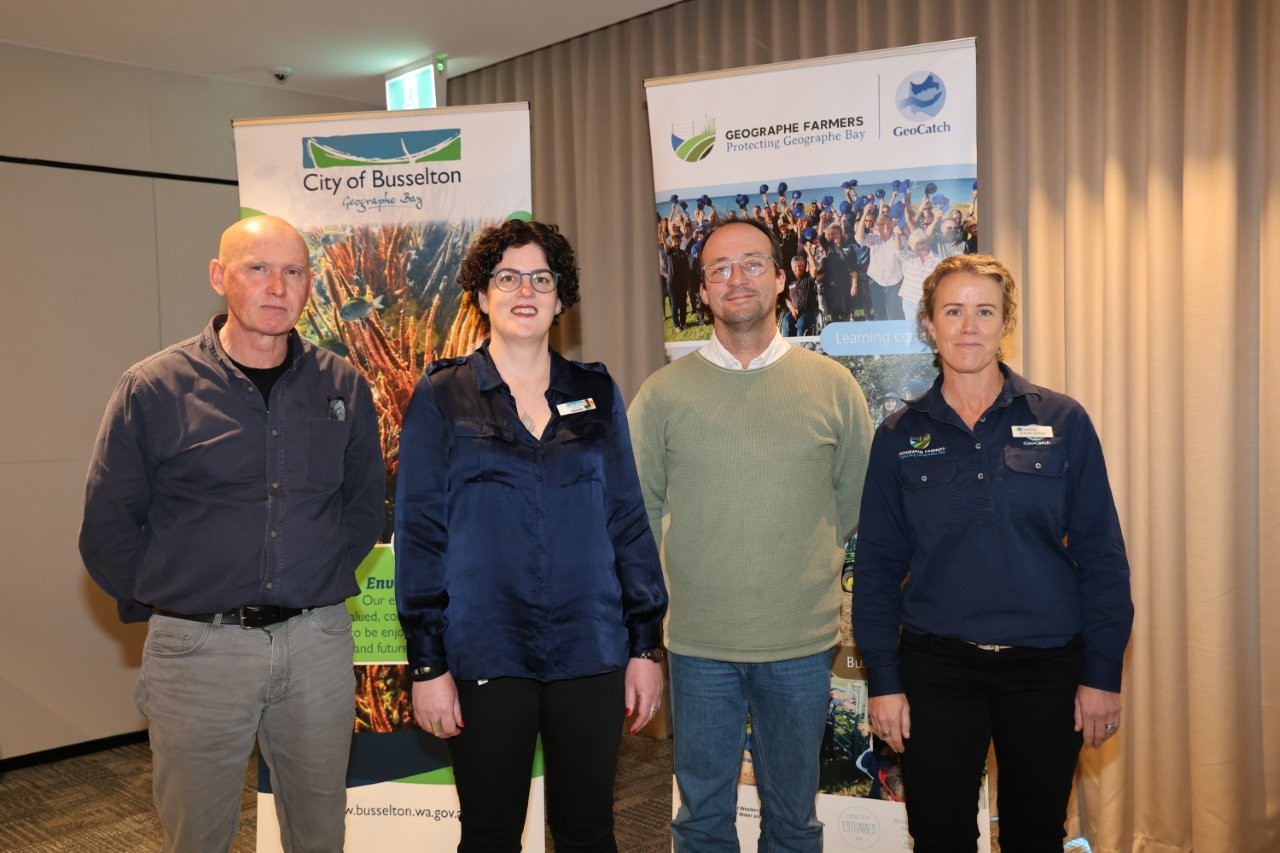
July 2025
The State Government has announced the appointment of Ms Neema Premji, as the new Chair of the Vasse Taskforce.
The Vasse Taskforce oversees the Revitalising Geographe Waterways (RGW) program, a State Government funded initiative under the Healthy Estuaries WA program. The City of Busselton’s role as interim asset manager of the Lower Vasse River sits within the Taskforce, alongside other state agencies.
To read more about Ms Premji’s appointment, see the State Governments media release - New Chair to lead next phase of Vasse Taskforce | Western Australian Government.
We’d also like to share that the City of Busselton’s Waterways Management Committee will meet again on the 23 July 2025. Published minutes and agendas can be found on the City’s website.
May 2025
City staff have planted 140 locally native species along the Lower Vasse River, enhancing riparian vegetation (vegetation suitable for waterway banks and foreshore areas) to improve waterway health.
These plants help stabilise banks, filter nutrients, provide water shading and cooling, and provide foraging and breeding habitat for native wildlife. This work is especially important for species like the Western Ringtail Possum and the South-western Snake-necked Turtle, which rely on dense native vegetation for nesting and protection. The South-western snake-necked turtle population is aging, largely due to difficulty in successful reproduction caused by lack of vegetation and suitable nesting habitat, and increased drying of waterbodies.
The Lower Vasse River is a unique permanently fresh waterbody in a system dominated by seasonal waterways and estuaries. This project was delivered by the City’s internal staff-run Green Taskforce.

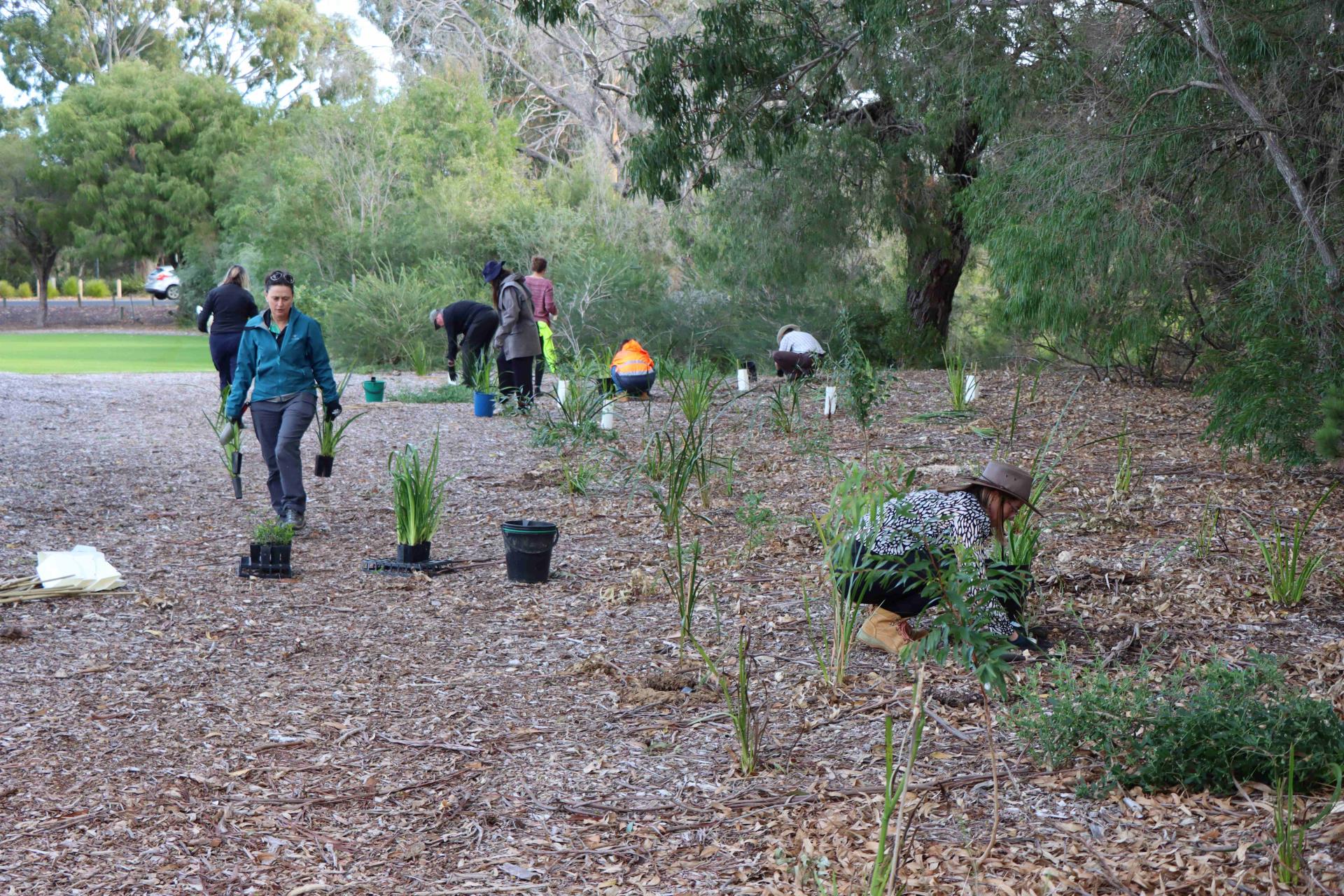

April 2025
Stage 3 Sediment Removal
Stage 3 of the Lower Vasse River Sediment Removal Program will use a direct excavation methodology.
This method employs a trial strategy of sediment removal; research and development for this method will be ongoing and the project must be adapted and adjusted accordingly. The project is also subject to rainfall and water levels in the river. Initially, Stage 3 was planned for summer/autumn 2025, however, due to high water levels in the river the City has prioritised an alternative timeline for Stage 3. An alternative project timeline, commencing in November 2025, will allow for a longer dewatering period, providing better conditions for sediment excavation.
In the meantime, work on Stage 3 is happening in the background. The City is working to secure the appropriate approvals for Stage 3. Requirements for the management of Carter’s Freshwater Mussels, Environmental Protection Authority (EPA), and protection of Aboriginal Heritage are now satisfied. Additionally, similarly to Stages 1 and 2, Stage 3 requires a ‘laydown’ area for daily processing of excavated material. A lease has been finalised for Lots 6 and 8 (74 & 78) Causeway Road and a laydown area will be established here. This laydown area will house 1 – 2 plastic-lined bunded areas consisting of sand and limestone. These bunded areas will be used to store excavated material prior to daily transport and treatment. Additionally, the City is in the final stages of procuring Specialist Advice and Project Management services to assist in project delivery. The City has also contracted a geotechnical assessment and report to inform the sediment removal works and to reduce risk.
The City of Busselton is not the land owner of the Lower Vasse River, but voluntarily acts as the Interim Asset Manager to enable focussed and prioritised management of the river. To proceed with the sediment removal program the City has secured a license (s.91) from the land owner (the Department of Planning, Lands and Heritage).
Further updates on the progress on Stage 3 will be provided once a timeline is finalised.
The City is also progressing a Subsurface Aeration Trial in the river for the purposes of evaluating the method for effectiveness in improving water quality and combatting annual algal blooms. The City is working with a specialist environmental consultant and an aeration technology provider to establish a trial for spring/summer 2025/26. The City will also work with the Department of Water and Environmental Regulation (DWER) to evaluate the appropriateness of this water treatment method for use in the Lower Vasse River through the Vasse Taskforce Water Quality Decision Support Framework.
| Project Stage |
Nutrient |
Average total nutrient removed (t) |
| Stage 1 1,638t (dewatered sediment) |
Total nitrogen |
11.8 |
|
Total phosphorus |
2.7 |
| Stage 2 1,484t (dewatered sediment) |
Total nitrogen |
9.0 |
|
Total phosphorus |
1.2 |
January 2025
At the January 2025 Ordinary Council Meeting, the Council accepted the sediment removal tender for Stage 3 from Busselton Civil Pty Ltd (BCP Group), as recommended by the Waterways Management Committee in November 2024.
These works are to take place between Strelly Street and Reserve 41204 Isaacs Street. You can read more about Stage 3 of the sediment removal in the April 2025 update.
28 November 2024
The City of Busselton is continuing with its commitment to improving the health of the Lower Vasse River through the assessment of a new aeration trial.
The City’s Waterways Management Committee was established in 2024 and its members have been reviewing the outcomes of previous dredging work and other approaches to reduce algal blooms that occur each summer in the river, which are caused by excess nutrients from the urban and rural catchment.
Whilst the long term solution to prevent these nutrients from entering the local waterways, a range of approaches have been undertaken by the City and its partner agencies to look at ways to reduce algal blooms in the interim.
The State Government is the owner of the river, but in recent years the City has agreed to take on the role of Interim Asset Manager to enable a more responsive approach to ensuring its health. Investigating an aeration trial is the next step in our ongoing work to care for the river on behalf of the community.
Stage 3 of the City’s sediment removal program is currently in the procurement phase and still requires environmental approvals. The assessment of the aeration trial will be progressed through the Vasse Taskforce Water Quality Decision Support Framework and will require endorsement through the Vasse Ministerial Taskforce.
30 September 2024
Native fringing (riparian) vegetation of the Lower Vasse River has been largely cleared, leaving a narrow strip of remnant trees. The City of Busselton is working towards re-establishing this vegetation, and earlier this year a group of dedicate staff banded together and plant over 260 native seedlings along a section of the Lower Vasse River bank. After some well overdue rain in the past months, it’s great to see these plants thriving.
Vegetation along the river provides important habitat for terrestrial fauna, with overhanging trees offering many roosting and nesting sites for waterbirds. In addition to providing habitat benefits, fringing vegetation is a vital component of river health. The important functions include: - supporting terrestrial and aquatic food webs; - habitat for terrestrial and aquatic fauna; - foreshore stabilisation; - maintaining cooler temperatures - interception of nutrients and sediments in runoff; and - nutrient uptake and processing.
The planting day was coordinated by the City’s Green Taskforce, a group of staff who collectively work towards raising staff awareness and encourage more sustainable behaviours in the workplace by running and supporting sustainability activities and initiatives.
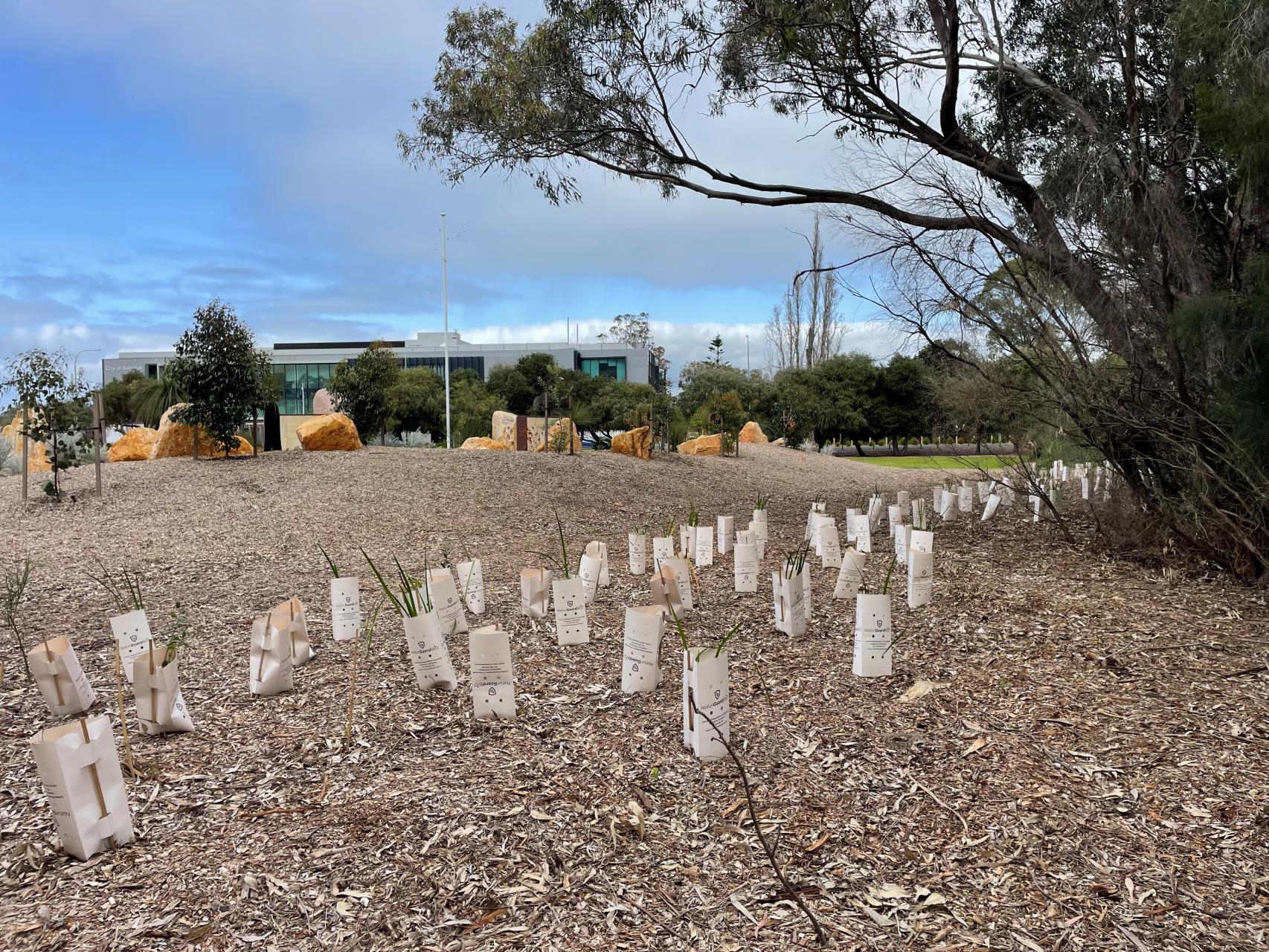
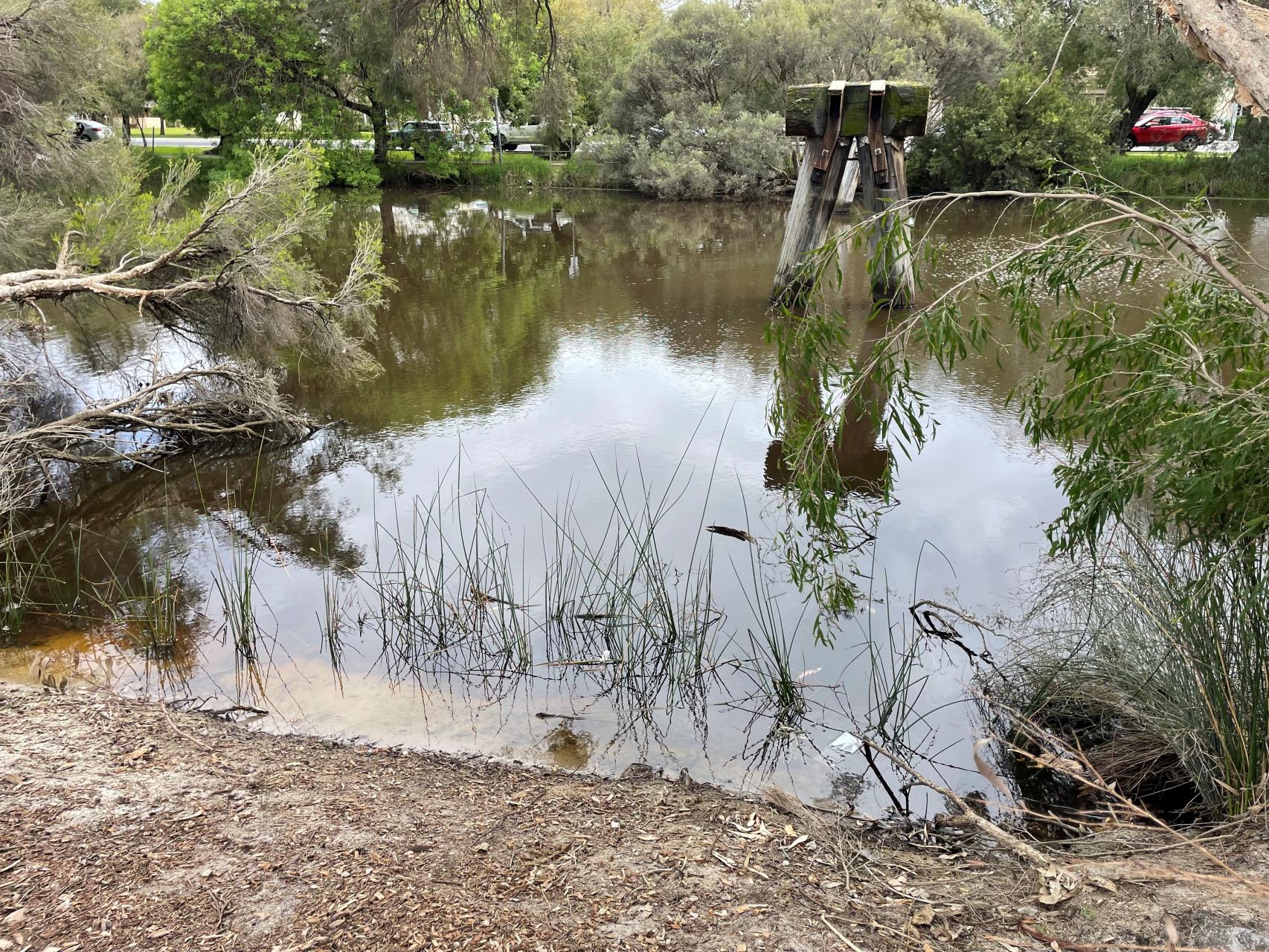
11 June 2024
A group of City staff volunteered to spend some time planting 260 plants along the banks of the Vasse River last week. The plants were a mixture of locally native species common in areas along riverbanks, this included specifies suited for right on the water’s edge, to those that grow further out.
The plants will help provide important foraging and breeding habitat for native animals, increase connectivity of habitat by providing corridors for animals and areas that foster improved biodiversity and ecological function. In addition, the plants will improve bank stabilisation and reduce nutrients entering the river, provide shade to improve riverbank conditions and water quality, and improve resilience to climate change.
Planting in riverside areas along the Lower Vasse River also aligns with strategies and actions in the Lower Vasse River Waterway Management Plan developed by the Department of Water and Environmental Regulation, City of Busselton and the Vasse Taskforce.



1 May 2024
The City of Busselton has completed a trial pit of approximately 4 tonnes of sediment testing on a section of the lower Vasse River. The purpose of the trial was to see how the material behaves when excavated/handled and will also undergo various tests including ASS (Acid Sulphate Soils) and water content. As this was a trial, there were no requirements to get any specific additional approvals. The material will be transported to the City’s transfer facility and will be further inspected and treated for ASS.
April 2024
The City of Busselton continues to work through its 6 staged-approach of sediment removal, established in 2022, with locations for each stage chosen based on water quality and priority.
The completion of the Stage 2 sediment removal in June 2023 saw approximately 670t of dry sediment removed. This sediment was laid to semi-dry in collection bags before being laid out on an Acid Sulphate Soils (AA) treatment pad at the Busselton Waste Transfer Station to treat and neutralise it. The City was then able to repurpose the sediment as daily cover at the Dunsborough Waste Facility.
The Department of Water and Environment Regulation (DWER) continue to monitor the water in the river to ensure effectiveness of the current sediment removal program. It was found during Stages 1 and 2 that pH levels and the clarity of the water were kept within acceptable ranges throughout the works. This data assists City and DWER officers with ongoing evaluation of the program.

In April 2024 the City advertised a tender for Stage 3 of the sediment removal process and this tender will close on 8 May. Stage 3 will focus on the part of the river near Strelly Street to upstream of the river bend (see map). The total budget for Stage 3 is $938,025, with $407,964 funded by the State NRM Community Stewardship Program.
In addition to sediment removal works, DWER have conducted a large-scale application of a phosphorus-binding clay (Phoslock) from the Causeway bridge downstream to the pedestrian bridge. The results from this, plus the results from Stage 2 of sediment removal, will be presented to Council by DWER in June 2024.
The City of Busselton has also collaborated with DWER to develop a Water Treatment Assessment Framework ensuring decision-making on the management of the waterways (Lower Vasse River and Toby Inlet) is scientifically robust and evidence-based.
Work continues on waterway management and further updates will be provided when available.
Removal of Sediment
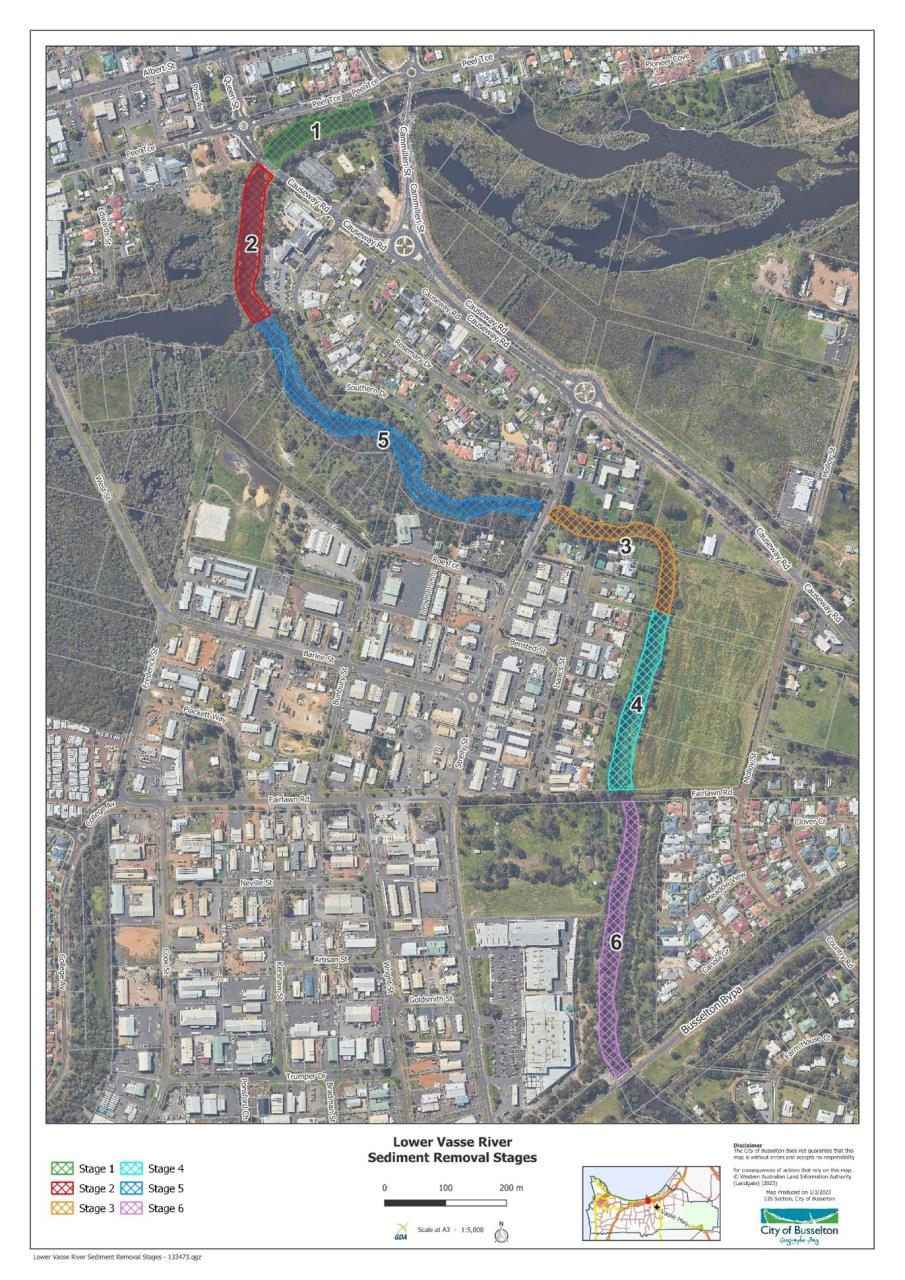
A layer of nutrient-rich, fine organic sediment has accumulated throughout the lower reach of the river. This sediment provides a significant potential internal source of nutrients that may contribute to microalgal growth. Conditions such as low dissolved oxygen and resuspension of sediments caused by physical disturbance, could release nutrients into the water column, feeding microalgae. These soft organic sediments also provide a poor substrate for beneficial aquatic plants, and poor habitat for benthic invertebrates.
The Sediment Removal Project is aimed at removing nutrient rich organic sediments that have accumulated in the river, which impact amenity, water quality, and benthic habitat. While sediment removal alone is not expected to prevent microalgal blooms occurring in the river, it has been identified as a step to reducing the extent, severity and duration of blooms in the future.
The project is a key recommendation from the Lower Vasse River Waterway Management Plan (City of Busselton, 2019) and benefits from community support.
Due to the large volumes of sediments, a staged approach is necessary to minimise environmental impacts and also due to logistical and financial constraints. Sediment removal staging was prioritised on a values basis as opposed to in a linear fashion, with locations for the initial stages of sediment removal selected based on several factors, including severity of annual algal blooms, level of public access, and technical advice and information available at the time. Availability of suitable land for the laydown area and dewatering process was also considered.
Stages 1 and 2 sediment removal are complete
Stage 1 consisted of dredging along a 200m stretch of the river between the Causeway Bridge and pedestrian bridge adjacent Rotary Park. Dredging was completed from 28 April to 8 June 2022, with the dredge operational for a total of 28 days.
Stage 2 consisted of dredging of sediment along a 300m stretch between the Causeway Bridge and old boat ramp along Southern Drive. Dredging was completed from 2 May to 20 June 2023, with the dredge operational for a total of 30 days.
Water quality testing was undertaken for the duration of the dredging and return water discharge. Results of the testing indicated that while the return water had elevated concentrations of nutrients, this did not result in a toxic algal bloom, the elevated nutrient concentrations did not extend far downstream, and dissipated quickly following completion of return water discharge.
The program has been successful in removing a significant sediment load, approximately 630t and 700t (dry weight) respectively from the first two stages, and the following nutrient load:
|
Project Stage
|
Nutrient
|
Average total nutrient removed (t)
|
|
Stage 1
1,638t
|
Total nitrogen
|
11.8
|
|
Total phosphorus
|
2.7
|
|
Stage 2
1,484t
|
Total nitrogen
|
9.0
|
|
Total phosphorus
|
1.2
|
Following the completion of these two stages, the City received analysis from the Department of Water and Environmental Regulation (DWER) who advised that a considerable concentration of nutrients re-entered the river via dewater.
High nutrient concentration in dewater was a risk that was identified during program inception. In an attempt to mitigate this risk, in Stage 1, Phoslock® (a phosphorus-binding clay) was applied to return water prior to re-entry to the river. Phoslock® has successfully been used worldwide to reduce bioavailable phosphorus in aquatic environments.
Unfortunately due to the complex composition of the sediment, Phoslock® was not effective in sufficiently treating the return water. In Stage 2, DWER led a trial that filtered dewater through an off-river treatment system containing Poseidon Pellets, beads that are designed to bind bioavailable phosphorus. A triple filtration system using this product was successful in treating a subset of dewater during the trial. However, to scale-up this method to treat all dewater was found to be prohibitively expensive and the concentration of dissolved aluminium in water after treatment was found to be unacceptably high.
Stage 3 sediment removal
Stage 3 works are scheduled for 2025. The City has been successful in securing $407,964 of funding from the State Natural Resource Management's Community Stewardship Grant Program. Funds will assist with Stage 3 sediment removal works in the Lower Vasse River in a section upstream of the Strelly Street Bridge (Stage 3).
The first two stages were successful in removing considerable sediment and nutrient loads. However, the high concentrations of nutrients that were delivered back to the river via return water during dewatering does not align with the project objectives. The undesirable volume of nutrients returned to the river via dewater and concerns over whether the current method removes an adequate portion of sediment from the riverbed, has led the City to investigate and prioritise alternative methods for Stage 3, such as, in situ dewatering and direct excavation, which has necessitated rescheduling of sediment removal to occur in summer/autumn instead of winter, and additionally amendment of approvals and management plans.
Alternative Sediment Removal Method
In April 2024, the City conducted a sediment excavation and pliability trial. The trial showed that while the surface of the exposed sediment appeared dry, sediment remained saturated. The sediment however, was spadeable, and able to be transported off-site and treated, indicating that in situ dewatering and direct excavation may be suitable for this site. The City has undertaken a sediment removal procurement process that requested tenders for both the dredging method and alternatives such as in situ dewatering coupled with direct excavation.
The City is currently procuring project management services and a geotechnical assessment for the stretch of the LVR between Strelly Street and Fairlawn Road (stages 3 and 4). The geotechnical assessment will help to refine the excavation methodology and minimise risk. The City has appointed an environmental consultant for the Stage 3 works, including amendment of current approvals, and discussions with regulators. The environmental contractor will also liaise with the City and stakeholders to refine the in situ dewatering and excavation method to mitigate environmental risks, conduct baseline and ongoing testing and develop/amend all required plans and procedures.
In Situ Dewatering and Direct Excavation Methodology
The direct excavation method proposes to undertake the works in a ‘dry’ riverbed over summer and autumn, employing in situ dewatering for inundated areas. Dewatered sediment will be excavated with a 13-tonne excavator and loaded into 9 tonne mini dumper trucks. To enable movement along the riverbed the contractor proposes to construct longitudinal paths and transverse bunds using crushed limestone or marine sandbags. Excavation using a long-reach excavator may also be used. Excavated sediment will be delivered to a limestone pad adjacent to the river, and transported off site daily to the Dunsborough Waste Facility where it will be treated with sand and lime for ASS.
Sediment removal for environmental outcomes is uncommon in natural waterways, and the City is unaware of local instances using in situ dewatering and direct excavation for the purpose of water quality improvements. This method development necessitates a degree of ongoing research and development throughout the works, with a need to be adaptable and innovative.
Environmental parameters and water quality will be monitored throughout the works by an environmental consultant, who will provide management plans, baseline analysis, through to water quality monitoring, sediment disposal requirements, and closure and evaluation reporting.
The City believes that, while in situ dewatering and direct excavation will initially add significant complication and potentially project delays, that it represents the best available solution, and could in time (once the new method has been established and refined) be more financially viable, time efficient and remove a greater proportion of both sediment and nutrient loads from the river.
Future Stages
The City is currently committed to the Sediment Removal Program as a means to improve water quality in the Lower Vasse River. Where practical, and as opportunities arise, more funding applications will be made to support continued sediment removal in the River. However, following completion of the first three stages the City has committed to detailed analysis of program outcomes, before progressing future stages.
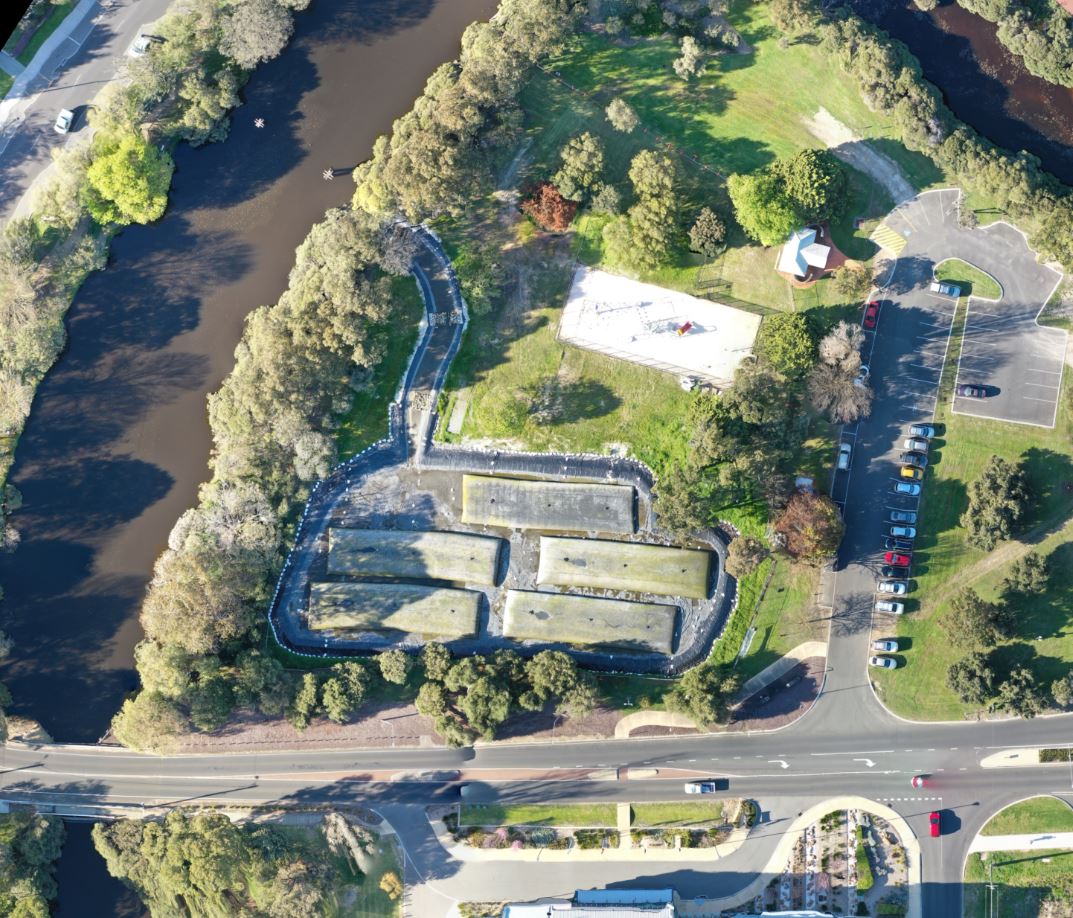
Image: Laydown area showing dewatering geotextile bags (Stage 2) – Rotary Park
Project Timeline
February 2021 - Lower Vasse River Management Advisory Group selects sediment removal as the highest priority recommendation for implementation
September 2021 - City was awarded $350,000 under the Healthy Estuaries WA program
February 2022 - Environmental and Heritage approvals granted
Stage 1
April to June 2022 - Stage 1 Dredging works (downstream from Causeway Road bridge)
June-October 2022 - Sediment slurry dewatering in Rotary Park
November 2022 - City was awarded $407,964 under the State NRM Community Stewardship Program for Stage 3 of sediment removal
November 2022-February 2023 - Dewatered sediments transported off site and treated for Acid Sulphate Soils, prior to reuse
Stage 2
May-June 2023 - Stage 2 Dredging works (upstream of the Causeway Road Bridge)
June-October 2023 - Sediment slurry dewatering in Rotary Park
November 2023-February 2024 - Dewatered sediments transported off site, treated for Acid Sulphate Soils, and repurposed as landfill daily cover
Stage 3
Spring/summer 2023/24 - Carter’s Freshwater Mussel management
Summer/autumn 2025/26 - Stage 3 of sediment removal (upstream of the Strelly Street Bridge) to commence
Autumn/winter 2026 – Excavated sediment transported off site, treated for Acid Sulphate Soils, and disposed of at the Dunsborough Waste Facility
FAQs
Lower Vasse River Sediment Removal FAQs
Related Information
EPBC Compliance Report 2024-2025 - Lower Vasse River
EPBC Compliance Report 2023-2024 - Lower Vasse River
Sediment Disposal and Reuse Options Assessment
Environmental Management Plan for Carter's Freshwater Mussel Westralunio Carteri
Survey of Carter's Freshwater Mussel in the Lower Vasse River
Lower Vasse River - Dredge and Disposal Management Plan
Lower Vasse River - Acid Sulfate Soil and Dewatering Management Plan
Acid Sulfate Soil and Dewatering Management Plan